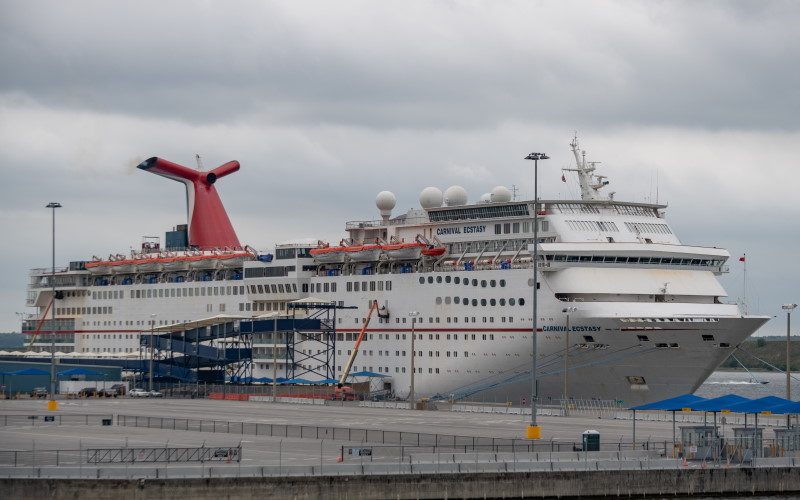As the coronavirus began spreading across the world, the cruise industry continued setting sail. The result: thousands of passengers exposed to the virus, with many becoming infected and dozens of deaths. Additionally, thousands of passengers have been stranded at sea, unable to disembark as local governments are hesitant to take on the risk of exposed individuals entering their jurisdictions while hospitals are already pushed to their limits.
So far, there have been more than 15 cruise boats reported to have passengers or crew members diagnosed with, or suffering symptoms of, COVID-19. Those ships include:
- The Diamond Princess, Grand Princess, Ruby Princess, and Coral Princess operated by Princess Cruises (a subsidiary of Carnival);
- The Zaandam and Rotterdam, operated by Holland America (also a subsidiary of Carnival);
- The Voyager of the Seas and Ovation of the Seas, operated by Royal Caribbean;
- The Silver Shadow and Silver Explorer, operated by Silversea Cruises (majority owned by Royal Caribbean);
- The Costa Luminosa, Costa Magica, Costa Favolosa, and Costa Victoria, operated by Costa Cruises (at least partially owned by Carnival);
- The Solstice, operated by Celebrity;
- The Meraviglia, operated by MSC;
- The Braemar, operated by Fred Olsen Cruise Lines; and
- The Artania, operated by MS Artania Shipping.
It’s unclear why the cruise companies chose to continue sailing well into March. By early February, the virus began infecting passengers aboard the Diamond Princess. Although a quarantine was attempted on the boat, the virus rampaged, infecting 700 and killing 10. At one point, the Diamond Princess’ passengers accounted for more than half of all of the worldwide coronavirus infections outside of China, according to the World Health Organization.
Despite the Diamond Princess outbreak, its sister ship, the Grand Princess, set sail from California on February 11—a week after the Diamond Princess quarantine began. As the Grand Princess continued its journey the COVID-19 infections began to mount. Quarantines remained in effect even after the boat returned to port on March 7. Crew members were stuck on the boat at dock, while many passengers were transported to Dobbins Air Force Base in Georgia. By March 21, at least 78 individuals who were on the Grand Princess tested positive for the virus.
But as the lucrative spring break season approached, the cruise companies continued to assuage their customers and set sail. For instance, back on February 12, Carnival told the public it was “closely monitoring the evolving situation with respect to Coronavirus,” and that “[t]he safety of guests and employees, compliance and protecting the environment are top priorities for the company.” The next month, on March 31, Carnival reported to its investors that it had 6,000 passengers stuck at sea due to COVID-19 infections—and it was merely hopeful that those passengers would disembark “by the end of April.” Two of those affected ships were Carnival subsidiary Holland America’s Zaandam and Rotterdam.
The Zaandam initially left port on March 7. That same day, the WHO reported that global confirmed coronavirus cases exceeded 100,000. The Zaandam was scheduled to return to dock and disembark passengers on March 21. However, as passengers began contracting the deadly virus, Holland America was left without a way to get them back on land. As the boat meandered at sea without a willing port, the company deployed the Rotterdam to receive passengers from the Zaandam, leaving both boats stuck in the ocean. This situation persisted until April 3, when they were finally allowed to begin disembarking passengers in Ft. Lauderdale.
In the fallout of the coronavirus cruise ship outbreaks, the public will have questions for the industry. How could so many passengers be exposed to the virus? Why did they continue setting sail, even after the Diamond Princess outbreak? After all, cruise companies are supposed to be experts in the field. They are trusted to properly assess risk and make reasonable decisions with passenger safety as a central concern. The law holds the cruise lines to this type of responsibility—called the duty to exercise reasonable care. Some passengers believe the cruise companies violated their duty, and have begun to file lawsuits to recover compensation for the injuries and traumatic experiences they endured. Those actions are in their initial stages and will continue progressing towards motion practice and discovery. Hopefully, that process will help to generate some much-needed answers.
We’ll continue to monitor for developments relating to the coronavirus cruise ship outbreaks, and the related litigation, and report back here with key updates.


